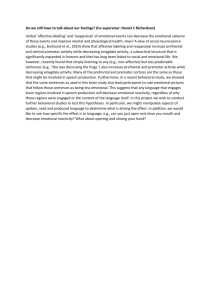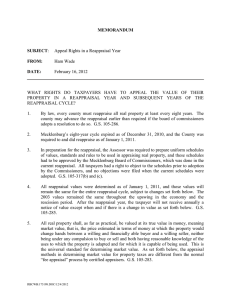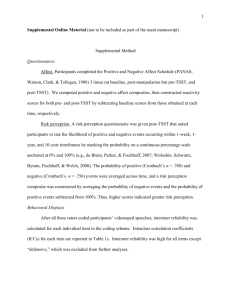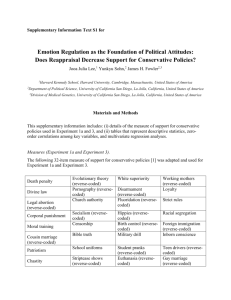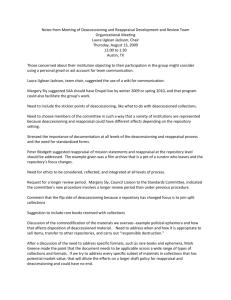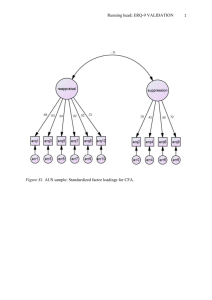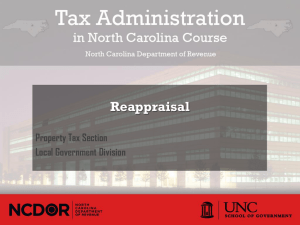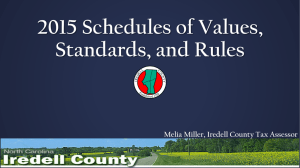Getting a better perspective
advertisement
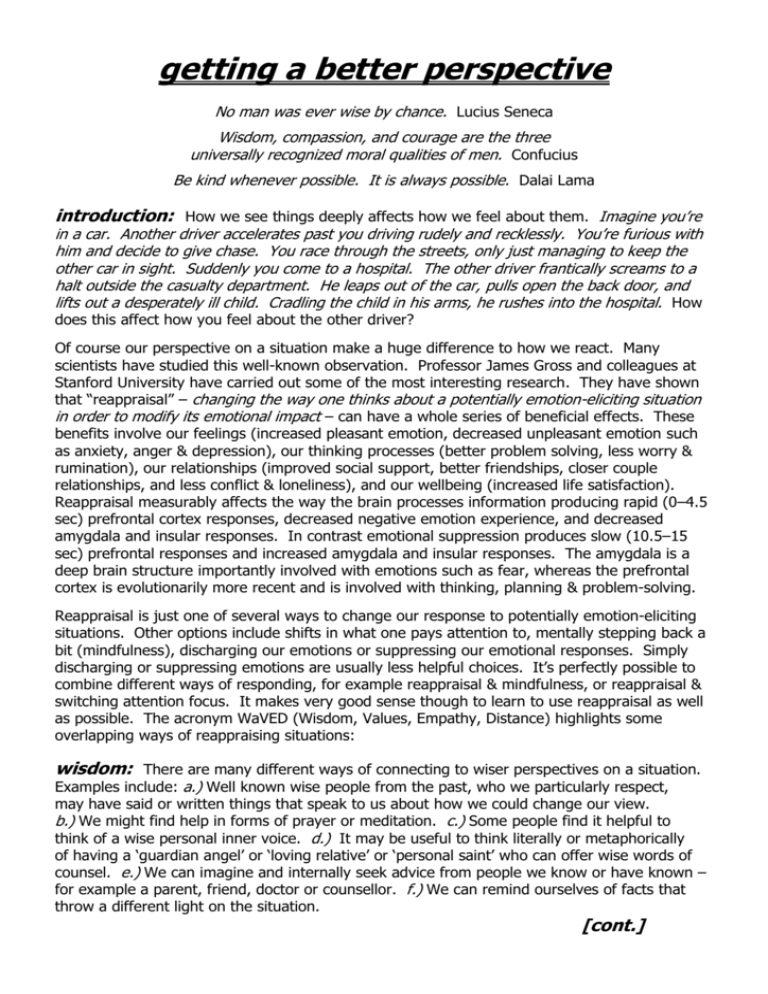
getting a better perspective No man was ever wise by chance. Lucius Seneca Wisdom, compassion, and courage are the three universally recognized moral qualities of men. Confucius Be kind whenever possible. It is always possible. Dalai Lama introduction: How we see things deeply affects how we feel about them. Imagine you’re in a car. Another driver accelerates past you driving rudely and recklessly. You’re furious with him and decide to give chase. You race through the streets, only just managing to keep the other car in sight. Suddenly you come to a hospital. The other driver frantically screams to a halt outside the casualty department. He leaps out of the car, pulls open the back door, and lifts out a desperately ill child. Cradling the child in his arms, he rushes into the hospital. How does this affect how you feel about the other driver? Of course our perspective on a situation make a huge difference to how we react. Many scientists have studied this well-known observation. Professor James Gross and colleagues at Stanford University have carried out some of the most interesting research. They have shown that “reappraisal” – changing the way one thinks about a potentially emotion-eliciting situation in order to modify its emotional impact – can have a whole series of beneficial effects. These benefits involve our feelings (increased pleasant emotion, decreased unpleasant emotion such as anxiety, anger & depression), our thinking processes (better problem solving, less worry & rumination), our relationships (improved social support, better friendships, closer couple relationships, and less conflict & loneliness), and our wellbeing (increased life satisfaction). Reappraisal measurably affects the way the brain processes information producing rapid (0–4.5 sec) prefrontal cortex responses, decreased negative emotion experience, and decreased amygdala and insular responses. In contrast emotional suppression produces slow (10.5–15 sec) prefrontal responses and increased amygdala and insular responses. The amygdala is a deep brain structure importantly involved with emotions such as fear, whereas the prefrontal cortex is evolutionarily more recent and is involved with thinking, planning & problem-solving. Reappraisal is just one of several ways to change our response to potentially emotion-eliciting situations. Other options include shifts in what one pays attention to, mentally stepping back a bit (mindfulness), discharging our emotions or suppressing our emotional responses. Simply discharging or suppressing emotions are usually less helpful choices. It’s perfectly possible to combine different ways of responding, for example reappraisal & mindfulness, or reappraisal & switching attention focus. It makes very good sense though to learn to use reappraisal as well as possible. The acronym WaVED (Wisdom, Values, Empathy, Distance) highlights some overlapping ways of reappraising situations: wisdom: There are many different ways of connecting to wiser perspectives on a situation. Examples include: a.) Well known wise people from the past, who we particularly respect, may have said or written things that speak to us about how we could change our view. b.) We might find help in forms of prayer or meditation. c.) Some people find it helpful to think of a wise personal inner voice. d.) It may be useful to think literally or metaphorically of having a ‘guardian angel’ or ‘loving relative’ or ‘personal saint’ who can offer wise words of counsel. e.) We can imagine and internally seek advice from people we know or have known – for example a parent, friend, doctor or counsellor. f.) We can remind ourselves of facts that throw a different light on the situation. [cont.] values: Reminding ourselves of our values can often help in reappraising emotion-eliciting situations. Examples include: a.) How my values suggest I should react. What would I want written on my tombstone about the kind of person I was? How would I want my friends, children and other loved ones to remember me. The “Respected figures” and “Eightieth birthday party” exercises can help to clarify these personal values. b.) Why – the underlying purpose one has for being involved in the situation in the first place – can help to throw a different light on how it might be best to react. c.) Learning & growth – reframing a situation as a potential learning experience can help to change one’s view of it. What can I learn from this? How could this teach me to do a better job next time? How could this help me develop better qualities or be more understanding for others in similar situations? empathy: Being empathic for others and for oneself can help. a.) Almost certainly people’s behaviour is understandable when one knows what they have been through and what state they are in (this applies too for ourselves). Trying to stand in the other person’s shoes suggests how they may be seeing the situation. We are all probably doing the best that we know. What we know may be lacking! b.) It may help to think of everyone behaving in the way that they do because they are trying to satisfy underlying needs. Usually the needs are valid. The way that we are trying to satisfy the needs may not be skilful, fair or appropriate. The negotiation is then how to respond to valid needs in better ways. distance: Construal level theory highlights that increased psychological distance from a situation encourages more abstract, values-linked, sensible thinking. We start to see the wood rather than just the trees. Temporal distance, spatial distance, social distance, and thinking hypothetically all encourage shifting to a higher, more abstract construal level. a.) So imagining looking back on the current situation from some point in the future can change our perspective on it. So too can thinking of the situation as if it was occurring to others in another century or in another country. b.) One can also create more spatial distance by going out to think on a walk, or talking to a friend, or when out for a meal, or on a holiday break. c.) Social distance is created by imagining how one would think about the situation if it was happening to a friend, an acquaintance, or a stranger. It may also help to ask oneself how one would view the situation if one had complete power over it – how would one treat the trees if one had responsibility for the whole wood? d.) Most of these examples of creating psycho-logical distance involve hypothetical thinking. Hypothetical thinking can extend to imagining how one would respond if the situation itself were more extreme, less extreme, had the people involved all swapping roles, and so on. All these forms of psychological distance can encourage reappraisal that links better to healthier overviews of a situation – getting a bird’s eye view – rather than simply having a knee jerk reaction. conclusion: Reappraisal – the ability to put things into helpful perspective – is a very healthy, wise ability to have. We can learn to do this better. Most of us improve at being able to reappraise situations as we get a bit older, but we can encourage ourselves in this maturing process. What forms of helpful reappraisal do you – or people you know – already use? Do some of the suggestions given on this handout appeal to you? Which ones? Experiment. See what helps you with your own emotional reactions, with acting more constructively, and with relating better to other people. Guard against simply worrying or ruminating about situations. This is rarely helpful. Actively reappraise. Maybe link this with talking things over with others, or with “Therapeutic writing”, “Compassionate mind training” & “Implementation intentions”. These are great skills to build.
